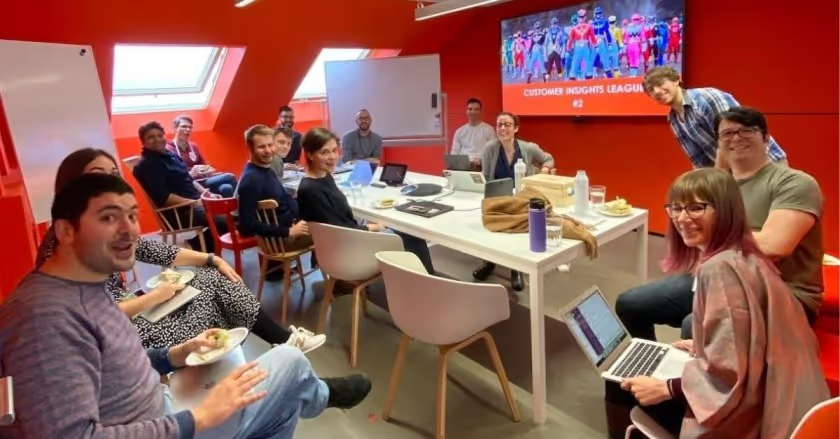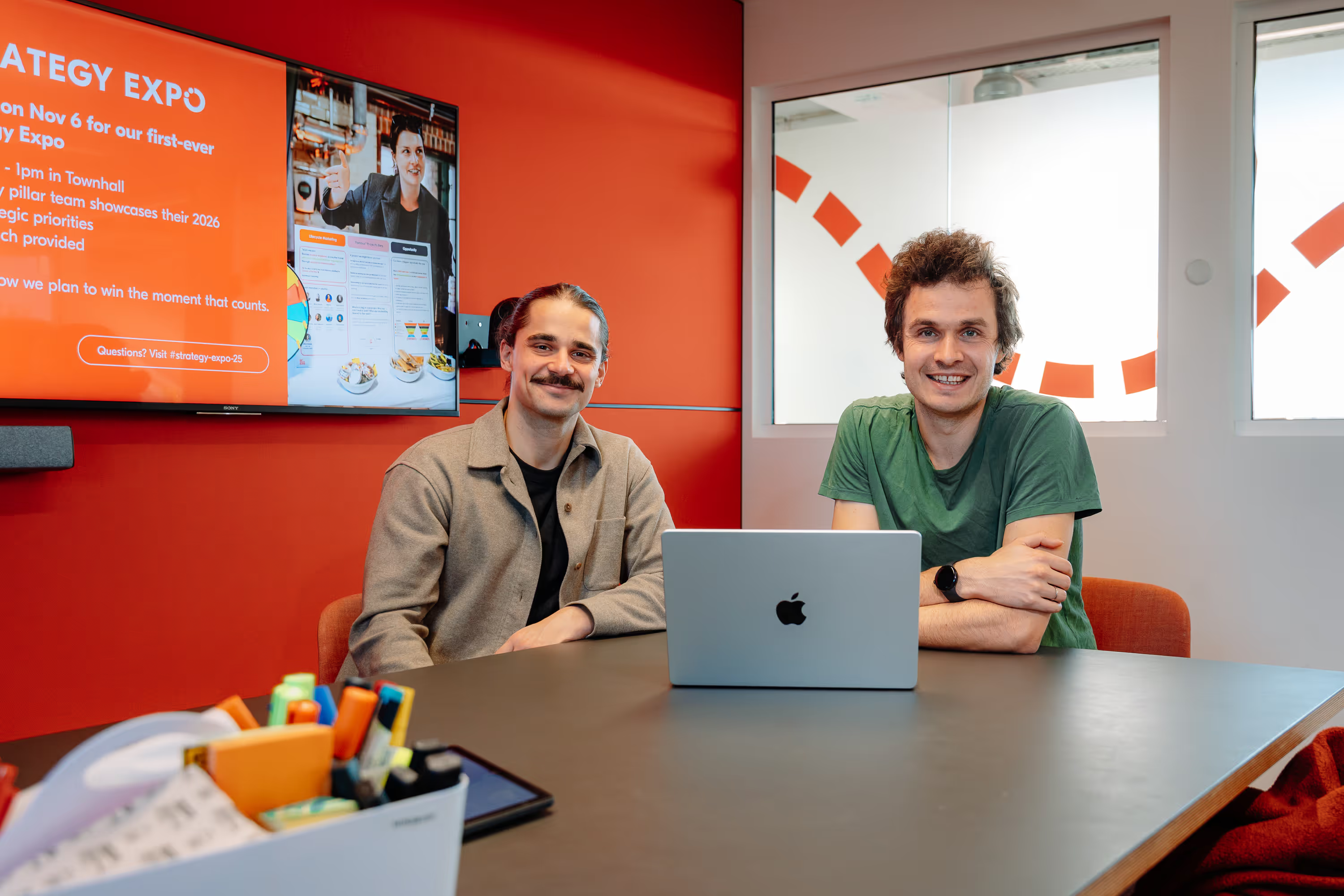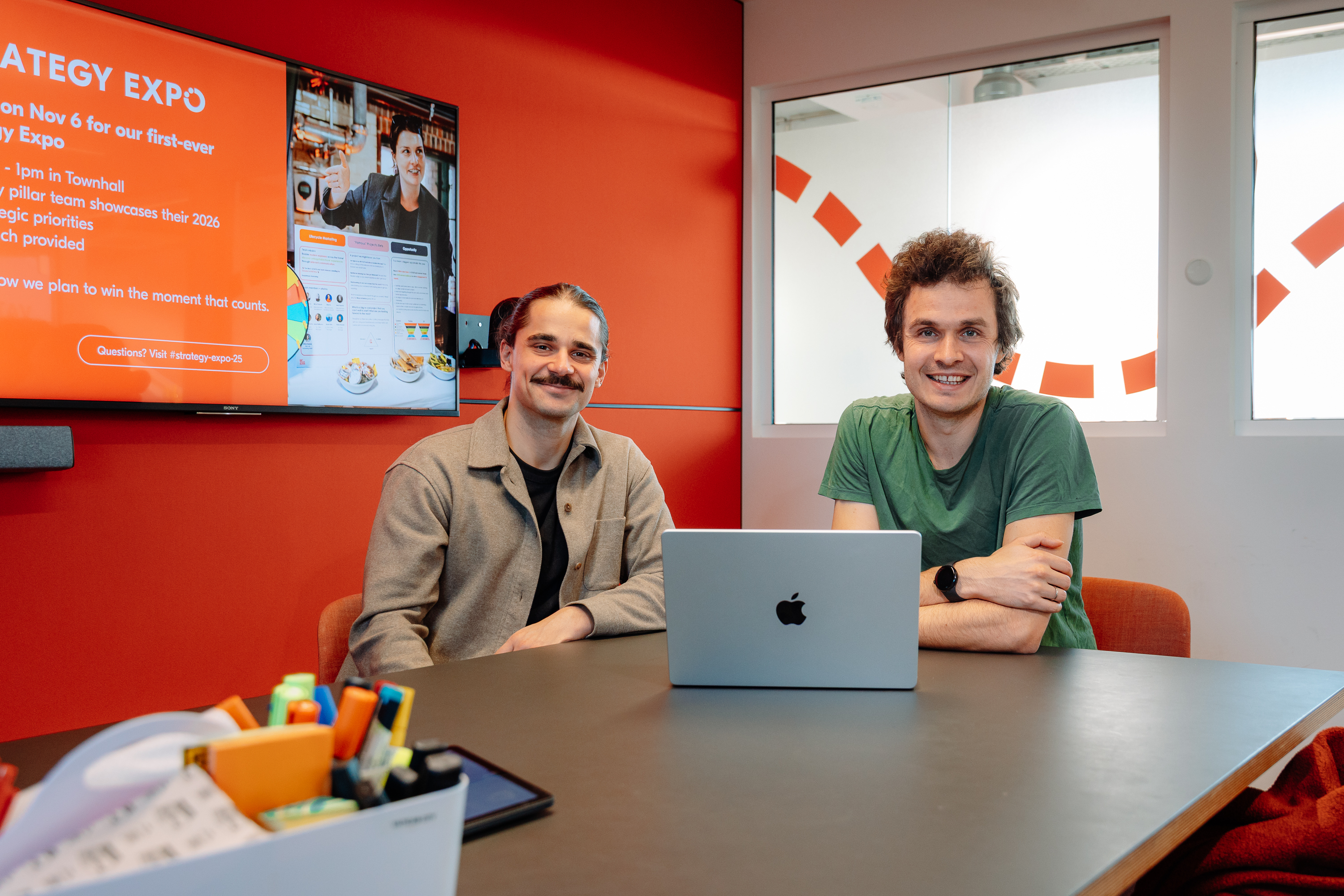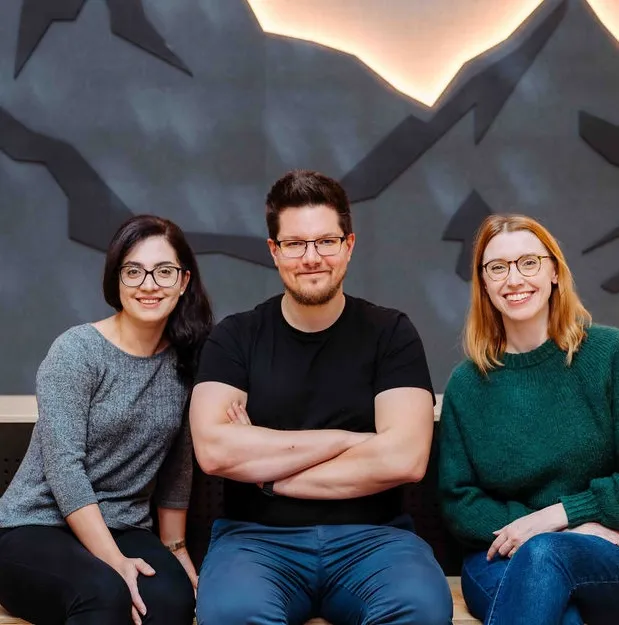How We Built the Ultimate Customer Insights Team
Customer insight is a deep and accurate understanding of a customer's need or problem. These pain points need to be looked at from different angles, through various data sources.

Key takeaways:
Paula Herrera, senior user researcher, launched GetYourGuide's multidisciplinary Customer Insights League (CIL). Rather than having user insights and analytics scattered across silos, the cross-functional group works as a holistic, central customer research hub within the company — to give our customers a louder voice. Members of the League, including experts from data science and market research, share which aspects drew them to the project.
*This header photo was taken several months before COVID-19.
{{divider}}
Briefly, what is customer insight?
Customer insight is a deep and accurate understanding of a customer's need or problem. These pain points need to be looked at from different angles, through various data sources.
These different data sources aim to answer the whos, whats, whens, wheres, hows, and whys of user behavior, allowing us to reach a well rounded comprehensive point of view on the topic.
It is only by joining forces between the different teams who best understand this data that we can reach our goal of creating impactful customer insights.
What is the Customer Insights League (CIL)?
The CIL is a group of people from different disciplines within GetYourGuide that focus on understanding our customers.
The League isn't a mission team nor a department. It's a collaboration or an informal guild between passionate customer advocates from five different teams — user research, market research, customer experience, data analytics, and data science — who joined forces to make the customer's voice louder within the company.
What's the goal of the League?
Our goal is to combine different data sources to build strong customer stories to inform company strategy. We want to advocate for the customer internally by ensuring that the people setting the strategy have the context they need to make the best decision for our customers.
Previously, when we brought insights to teams, they were often challenged or dismissed because they seemed too anecdotal. Quantity always provided security. So we soon started to reach out to data analysts to add quality to our insights.
To give you a better idea, picture this: The executives of the company are sitting at a strategy meeting. They're holding all the same information, analysis, and understanding of the customer. So when it comes time to decide our company strategy, they have an incredible amount of clarity on how their decision impacts the customer.
To bring this goal to life, we created three pillars to guide our efforts. Each comes with an initiative:
Pillar 1: Share knowledge between different teams and with the whole company
We're planning on making our insights accessible and digestible to the rest of the company. At the same time, we're letting other teams know what we're capable of by sharing our craft and skillset.
Initiative: A knowledge base.
We're creating a central repository where everyone in the company can access past research and analysis.
Pillar 2: Provide a unified, comprehensive view of the customer.
To help inform company decisions with a joint point of view, we are looking at the customer from all different angles, combining our diverse skills, methods, and data sources.
Initiative: A customer segments definition
We will combine what we know about the general traveler population, our customers, and their behavior on our platforms. This will allow us to understand who our customers are and which segment(s) we would like to focus our efforts on acquiring and retaining.
Pillar 3: Drive a truly customer-centric culture
We're planning on developing the right metrics to measure success, the right processes, standards, and principles to make decisions. This will help drive and measure company strategy.
Initiative: Establishing customer metrics
We're working on defining the key parameters that will help us measure and improve user experience quality and implement them into our dashboards.
The initial set of initiatives we are working on at the moment were created and prioritized by the whole CIL. Using the Impact, Confidence, Ease (ICE) model, we determined which ones would have the highest impact in helping us achieve the goals mentioned above. The model takes into account our confidence (e.g., Did we have people with prior experience on the subject?) and the effort anticipated (e.g., How much time and resources would we need to invest?).
Many companies have a customer-centric approach, but common challenges are related to organization, and how this approach will materialize.
Why did you start the League?
Before I started at GetYourGuide, I came from a much larger startup. There was a lack of conversations between teams on who was working on which customer insights initiative. We would find out mid-project that another group was already working on the same thing we had spent months on, which was frustrating.
When I decided to join GetYourGuide, I vowed that it would never happen again. But when I started, I learned that teams also weren't speaking to each other enough, and were sometimes tackling the same question separately. Sometimes, different data sources weren't combined in the most meaningful ways. As a result, there was a lack of strong customer stories that could drive company strategy.
The pain point was that we missed a loud, customer-centered voice. Many of our existing metrics were very business-oriented; this gave us little confidence that we focused on the right things for the customer. For example, we would start working on a new feature but would have a lack of supporting data to know this was the right thing to prioritize that would have the most significant impact on customer satisfaction.
Aren't most companies working on customer-insights? What makes this different?
Many companies have a customer-centric approach, but common challenges are related to organization, and how this approach will materialize. Different projects can get scattered across various departments without any real ownership. The League, on the other hand, works together on surfacing these projects/initiatives. An initiative is only pushed forward when all the teams within CIL believe in it.
How did the League start? How did you get buy-in?
It all started when I talked to different team members about customer research challenges. These conversations led to excitement about the potential for an initiative that would create space for collaboration.
Marlene Rosner, the director of UX, and Triston Cossette, director of Data Analytics, encouraged me to start the CIL. They were very supportive of my vision from the start, providing ongoing advice on how to make it work.
Marlene: Since bringing on user research as an in-house discipline, I saw big potential for combining the qualitative insights we uncovered with the quantitative lense of user analytics. Previously, when we brought insights to teams, they were often challenged or dismissed because they seemed too anecdotal. Quantity always provided security. So we soon started to reach out to data analysts to add quality to our insights. It was mostly informal, and many projects were only realized during our company hackathons.
I brought in anyone who could offer different aspects of the full spectrum of the customer experience. There needed to be a 360-degree view of who our customers are.
I then envisioned an Insights team at some point combining all user insights-related disciplines under it. As it wasn't the right time to move towards this in a formal reporting structure, an informal guild seemed like the perfect way to test this hypothesis.
When Triston joined, it meant we had the right partner on the quantitative side. He shared the same thinking and vision. Together with Paula's initiative and hunger for this, it was the perfect combination to start making the CIL a reality. Paula then pulled in even more disciplines that generated insights such as customer service — further building a holistic understanding.
Triston: Understanding our customers is critical to making decisions. The problem is that as we scale, our understanding of our customers fracture — different teams seek to understand and study different things. So when Paula talked to me about the CIL, it was clear that this cross-functional team could genuinely help bring a deeper and more complete understanding of our customers; and it keeps the customer at the center of our business. That's why it earned my support.
All the teams within the League bring a unique view of our user's needs, and the CIL can be a powerful way to create an information map of our customers.
Paula: Although I saw value in the League, different team members needed to too; otherwise, the initiative would fall flat. The League would need to comprise various members from different teams — as opposed to just the leads I got the buy-in from. Before our first meeting as a League, I included many people to gauge whether there was indeed a need. Beyond the directors, I needed to engage our Market Researcher, Annup Varkey, and Ola Makri, Head of Customer Experience.
Annup: When Paula reached out to me to be part of this League, I was excited by the prospect of joining like-minded data and insights lovers to better understand our customers.
I was eager to see how the different teams were tackling customer needs as well as learn best practices from experts in their respective fields. The League additionally gives an excellent opportunity to see all the customer initiatives in one place, brainstorm, ask questions, and challenge each other to do our best work.
Ola: I felt very passionate about the CIL from the very beginning. When I joined GetYourGuide, I was impressed with each team's effort to be customer-centric — but I knew that having an end-to-end understanding of the customers wasn't easy for any organization — let alone one that is in the stage of hypergrowth.
So bringing all sources of the customer insights together was, for me, a natural step to strengthen our customer-obsessed culture. All the teams within the League bring a unique view of our user's needs, and the CIL can be a powerful way to create an information map of our customers. From this blueprint, we can generate well-rounded, reliable insights. The CIL enables us to understand our customers better and make smarter decisions on their behalf.
Paula: I was so surprised by the enthusiasm and participation of everyone I spoke to. It was clear that the drive didn't just come from a purely work-related need, but from a passion for delivering something great to customers. The interest came from seeing the impact of our work on the products that we provide to travelers.
How did you identify who would be involved? Which skillsets did you need to make this succeed?
I brought in anyone who could offer different aspects of the full spectrum of the customer experience. There needed to be a 360-degree view of who our customers are. As a former market researcher at SoundCloud, I understood both the potential and limitations of each discipline and its methods. Through this experience, I learned to include every relevant team to see through different lenses. We needed specialists from:
- Market and User Research: They survey the customers to understand why they behave the way they do and dig deep into their needs and challenges. Market research helps us focus not only on the current customer but also our potential ones.
- Data Analytics and Customer Experience: They tell us who the customers are, their pain points, and how they behave on our platform.
- Data Analytics and Data Science: They tell us what customers might do in the future.
I contacted team leaders with the CIL idea. They then asked their team members about who could represent the team. We were fortunate to get Conor Digan, senior data scientist, and Valentin Mucke, data scientist, onboard.
Conor: Joining this initiative was an easy decision. I feel that the company has an excellent customer focus within each team, but it's a challenge to get input and learnings from the broader organization. The CIL sounded exactly like what we needed to get these customer insights across the company and share what we learn with a bigger group of people. The cross-functional aspect of this approach appealed to me as it's been proven that the best ideas come from diverse skill sets.
The League provides opportunities for team members to learn from each other. Make it clear to everyone that the League offers opportunities for development beyond their everyday work.
Valentin: To grow a company, you have to understand your customers and care about them. The challenge is that all organizations split into different units that make sense for the business. Each of these units has a specific impact on the customers and sees a customer's side and has a part of the customer knowledge. The only way to get the full picture is to share it. That's what I see in the CIL, collegially increasing our understanding of the customer through the different lenses that we all have.
Now that you've assembled a team of experts, how did you kick off the first meeting?
Paula: We started with an open, thoughtful, two-hour discussion. We discussed the gaps in the company's processes and thinking. We saw the opportunities of working together and the impact they could create.
Together we created a couple of statements that summarized why we wanted to be part of the League as individuals, our mission as a league, and our three pillars (detailed above) to bring our vision alive.
Tony Cusimano (UX Operations Specialist): In the meeting room, people seemed excited to have a group that could bring us together like this because we can sometimes feel siloed and isolated with our roadmaps, tools, and processes.
There was genuine excitement in that first meeting. The reactions I remember during the session and afterward was like, "Oh cool, you're working on that. I had no idea someone was taking that on," or "I can't wait to work together on this." From then on, we could collaborate more closely and do something for our customers that might take a lot of time to do on our own.
With so many diverse backgrounds, how did you pull together to create one mission?
Paula: The diverse backgrounds worked to our advantage when creating a mission. Through different disciplines, we were able to get a holistic picture of the customer needs and problems. We were ready to go beyond insights — we were able to tell stories that truly stuck to people. Stories enable product managers to make more meaningful changes to our product. The CIL is a place for members to access larger projects, develop new skills, and collaborate with others they previously didn't work with.
Did you find that setting up the League took time away from your core responsibilities at work?
In the beginning, yes, it took more time from my side to align with people and structure sessions. Fortunately, now I split the load of work in terms of who is hosting different meetings. We currently meet once a month, so it is not super time consuming for everyone involved. If you delegate or share the work on a passion project, you'll never feel overloaded.
What advice do you have for someone who wants to start a Customer Insights League in their own company?
1. Get buy-in from all the team members, not just the leads. These are the people who will make up the team.
2. The League provides opportunities for team members to learn from each other. Make it clear to everyone that the League offers opportunities for development beyond their everyday work.
How can members personally benefit from being a part of the CIL?
You can learn diverse new skill sets. These projects can contribute to your own personal career development. You never know, a big project with a company-wide impact that involves different teams can even lead to a promotion.
Interested in joining the Product and UX team? Check out our open roles


.jpg)




